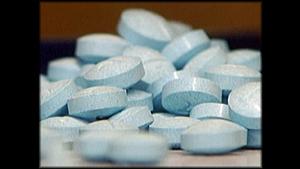
Heroin deaths in Queens were the highest in the city in 2013, according to the Department of Health and Mental Hygiene. File Photo
His name is John—that’s what he has asked us to call him—and he’s a heroin addict; has been for the last 18 months. Of this John is uniquely certain.
Because this is familiar territory. Been here, done this.
John’s dope saga, like those of so many in his native Queens, began with a pill.
“I got a root canal,” the thirtysomething out-of-work laborer said, recounting an emergency visit to a dentist about five years ago. “Doc gave me Percocet for the pain. It was downhill from there.”
Before he knew it, John said, he was popping five to seven prescription painkillers every day, spending more than half of his paycheck on pills, suffering through excruciating detoxification when he couldn’t get his hands on anything.
“I was an animal,” he recalled.
Not long after that, John said “roxies” hit Queens neighborhoods hard. These are tiny, light blue pain pills that pack a 30-milligram narcotic punch with every dose. And John, already intimate with opiates, fell under its spell. But with street prices rising to $30 per pill, John said that he found himself at a crossroads of sorts.
“I couldn’t afford to be a junky anymore,” he related, laughing briefly to himself, as if saying, ‘Did I just say that out loud?’ “I remember thinking, I could try the straight-and-narrow, you know, get clean; or I could try the cheaper alternative.”
John chose B—heroin.
And if recent numbers are any indication, it would appear that the city, especially Queens, has opted for B as well—with deadly consequences.
For the last three years, 2010 through 2013, the rate of heroin-involved overdose deaths increased in the Big Apple, according to a report released this summer by the City Department of Health and Mental Hygiene, while the prescription painkiller mortality rate appears to have leveled off during the same time period.
In 2013, heroin was involved in 54 percent of all overdose deaths, making it the most common substance involved in that particular cause of death. The rate of overdose deaths involving heroin in the five boroughs jumped to 420 in 2013, from 209 in 2010; while the rate of overdose deaths involving prescription painkillers increased by 256 percent from 2010 through 2013.
In Queens, the rate of overdose deaths involving heroin skyrocketed to 4.3 in 2013, from 1.9 per 100,000 residents in 2010. The rate of overdose deaths involving prescription painkillers in the borough increased to 2.6 in 2013, from 1.8 per 100,000 in 2012.
But who is dying over these drugs? According to the report, city residents of low-income neighborhoods and white New Yorkers have the highest heroin-involved mortality rates; however, 2013 data show the highest increases are among residents of the wealthiest neighborhoods and younger New Yorkers. And in 2013, residents of the wealthiest neighborhoods had the highest rate of prescription painkiller-involved deaths—4 per 100,000—compared with residents of all other neighborhoods.
Earlier this year, the state Senate announced the creation of the Senate Task Force on Heroin and Opioid Addiction to examine this rise in use of heroin and other opioids across state, and develop recommendations for treating and preventing addiction. In June, Gov. Andrew Cuomo and the state Legislature reached an agreement on multiple bills that include new programs and insurance reforms to improve treatment options for individuals suffering from heroin and opioid addiction; measures to strengthen penalties and put in place additional tools for law enforcement to crack down on the distribution of illegal drugs; provisions to ensure the proper and safe use of naloxone, an overdose antidote; and support for enhanced public awareness campaigns to prevent drug abuse.
By Michael Cusenza

